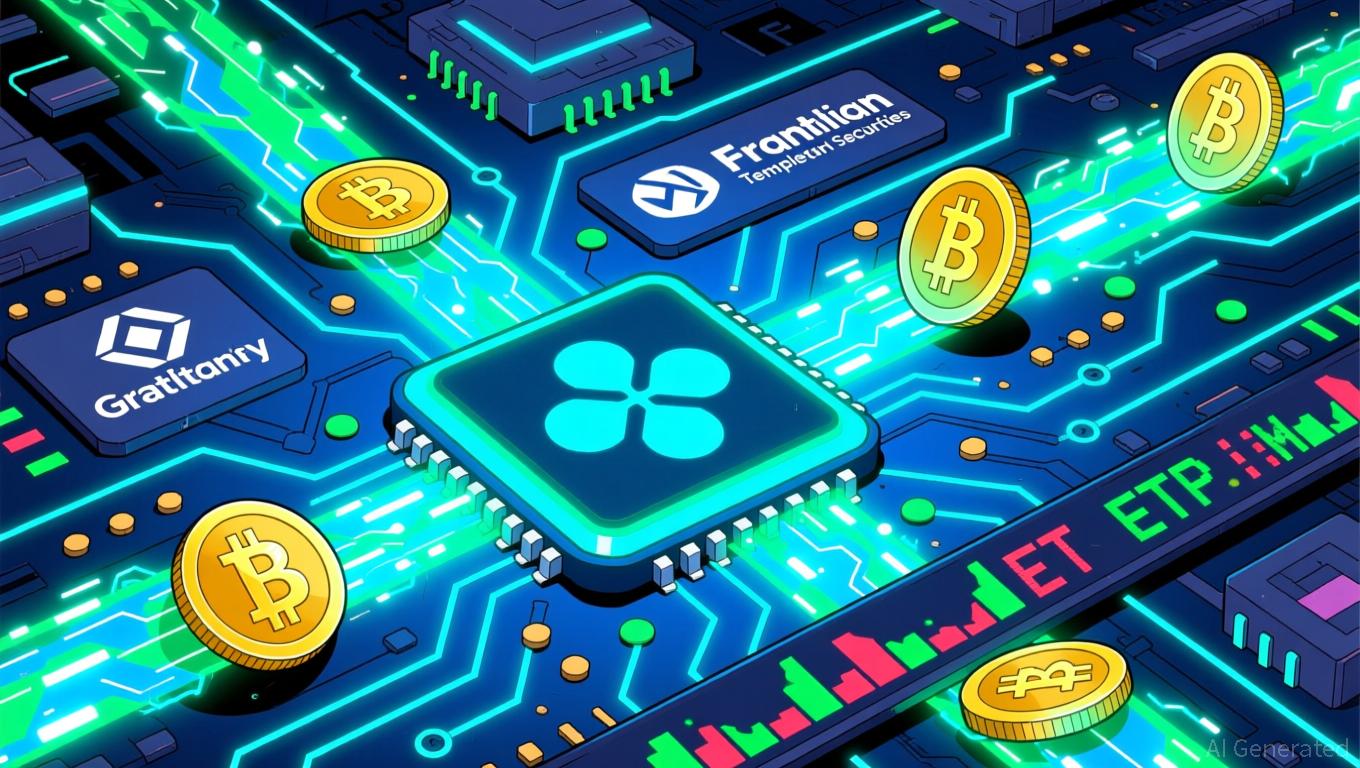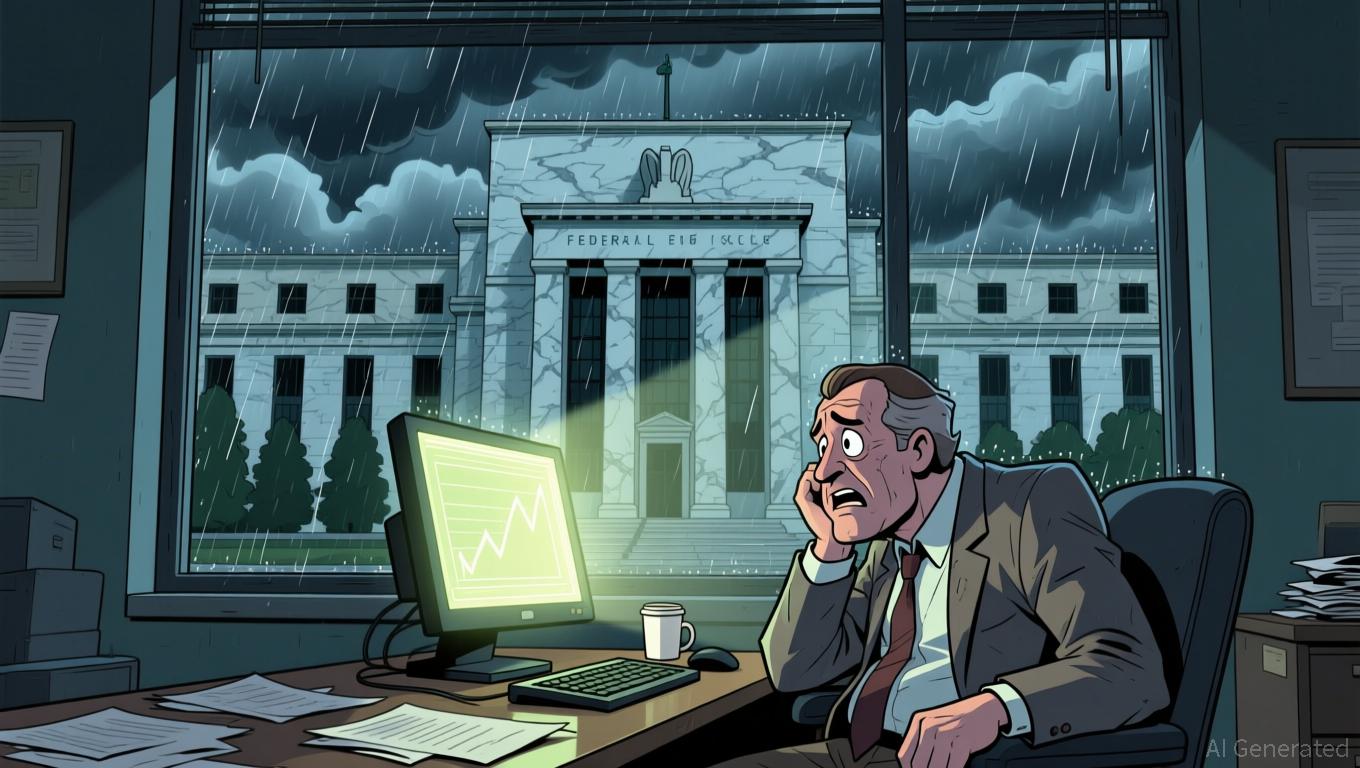ASIC's Approach to Crypto Aims for Equilibrium Amid Calls from Industry for Greater Transparency
- Australia's ASIC classified stablecoins and wrapped tokens as financial products, requiring AFSL licenses for crypto firms under new guidance. - Industry welcomed the move but criticized vague definitions, particularly around DeFi, while draft laws aim for 2026 regulatory compliance deadlines. - The framework includes $16.5M penalties for noncompliance and collaboration with AUSTRAC/APRA to avoid overlaps, targeting global crypto hub status. - With 31% crypto adoption in 2025 and $46T in stablecoin trans
Australia’s financial watchdog has released long-anticipated guidelines for crypto assets, designating stablecoins and wrapped tokens as financial products under current regulations. Industry representatives have generally welcomed the update but are urging for more precise definitions, according to
The revised regulations provide industry-wide “no-action relief” until June 30, 2026, giving companies time to adapt to the licensing rules, as highlighted by TradingView. ASIC also indicated it would allow experienced crypto professionals to serve as responsible managers under AFSL requirements and is offering temporary relief to firms actively pursuing authorization, according to Yahoo’s analysis. However, the regulator did not define “true DeFi,” leaving licensing decisions to depend on each party’s function within decentralized systems, Yahoo further reported.

Most industry participants have responded positively, with OKX Australia CEO Kate Cooper stating the move signals crypto’s growing role in mainstream finance, as reported by Coinpedia. Liam Hennessy, a partner at Thomson Geer, commended the approach for steering clear of both strict European-style rules and the fragmented U.S. model, also according to Coinpedia. Nonetheless, there are ongoing concerns about ambiguous definitions in the proposed legislation. Caroline Bowler, former CEO of BTC Markets, pointed out significant shortcomings, saying, “Structure must come with clarity,” a sentiment Coinpedia captured. The consultation period for the draft rules ended on October 24, and the final regulations are expected by March 2026, Coinpedia noted.
ASIC’s updated guidance also covers stablecoins and tokenized securities, which now fall under Chapter 5C of the Corporations Act, requiring strong custody, risk management, and disclosure standards, as Yahoo reported. The regulator stressed the importance of working with agencies such as AUSTRAC and APRA to prevent overlapping oversight, Yahoo added. Noncompliance could result in penalties of up to A$16.5 million or 10% of annual revenue, highlighting the government’s focus on enforcement, Coinpedia reported.
This regulatory initiative comes as
The proposed regulations and guidance are intended to establish Australia as a leading center for crypto, aiming to balance innovation with consumer safeguards. As the industry develops, clear rules around DeFi, stablecoins, and enforcement will be essential for maintaining confidence and supporting growth.
Disclaimer: The content of this article solely reflects the author's opinion and does not represent the platform in any capacity. This article is not intended to serve as a reference for making investment decisions.
You may also like
DeFi's Automation Shortfall Addressed: Orbs Introduces dSLTP to Achieve CeFi-Grade Risk Control
- Orbs launches dSLTP, a decentralized stop-loss/take-profit protocol for DEXs, bridging CeFi automation with DeFi. - The protocol automates risk management via on-chain orders, reducing real-time monitoring needs during volatility. - Built on Orbs' Layer-3 infrastructure, it enhances DEX functionality with CeFi-grade tools while maintaining decentralization. - This innovation addresses DeFi's automation gap, potentially driving DEX adoption and institutional-grade on-chain trading.

XRP Latest Updates: XRP ETFs Enhance Market Liquidity, Large Holder Sell-Offs Postpone Price Increases to 2026
- XRP ETFs launched in late 2025 (e.g., Grayscale's GXRP) expanded institutional access, but whale sales delayed price gains until 2026. - XRP traded near $2.12 as 41.5% of its supply remains in loss, with whale-driven volatility and structural supply imbalances persisting. - Ripple secured $500M institutional backing for XRP Ledger infrastructure, while projects like XRP Tundra accelerated tokenization plans. - XRP trails Ethereum in market cap ($129B vs. $373B) due to lack of smart-contract capabilities,

Dogecoin News Today: Grayscale's Alternative Coin ETFs Indicate Change: Bitcoin Withdrawals Differ from Rising Interest in Altcoins
- Grayscale launches GDOG and GXRP ETFs on NYSE, offering direct exposure to Dogecoin and XRP via spot ETPs. - ETFs convert private trusts to public offerings, aligning with industry trends to boost liquidity and attract institutional capital. - GXRP competes with existing XRP products ($422M inflows), while GDOG follows DOGE's rise to 9th-largest crypto by market cap. - SEC's "Project Crypto" framework and FalconX partnership strengthen Grayscale's position in regulated altcoin investment vehicles. - Altc

Bitcoin Update: Federal Reserve Postponements and $1.2 Billion ETF Withdrawals Trigger 26% Drop in Bitcoin Value
- Bitcoin falls 26% to $83,000 amid Fed's delayed rate-cut timeline and $1.2B ETF outflows, marking its longest losing streak since 2024. - Analysts warn of structural risks, with Bloomberg's Mike McGlone projecting a potential $10,000 drop and Cathie Wood revising bullish 2030 forecasts. - Market volatility intensifies as JPMorgan's index exclusion proposal sparks crypto sector backlash and S&P 500 defensive sector shifts highlight interconnected risks. - Fed's December rate-cut speculation and upcoming i
